
The codex was the historical ancestor of the modern book. Instead of being composed of sheets of paper, it used sheets of vellum, papyrus, or other materials. The term codex is often used for ancient manuscript books, with handwritten contents. A codex, much like the modern book, is bound by stacking the pages and securing one set of edges by a variety of methods over the centuries, yet in a form analogous to modern bookbinding. Modern books are divided into paperback and those bound with stiff boards, called hardbacks. Elaborate historical bindings are called treasure bindings. At least in the Western world, the main alternative to the paged codex format for a long document was the continuous scroll, which was the dominant form of document in the ancient world. Some codices are continuously folded like a concertina, in particular the Maya codices and Aztec codices, which are actually long sheets of paper or animal skin folded into pages. In Japan, concertina-style codices called orihon developed during the Heian period (794–1185) were made of paper.

Western Publishing, also known as Western Printing and Lithographing Company, was a Racine, Wisconsin, firm responsible for publishing the Little Golden Books. Its Golden Books Family Entertainment division also produced children's books and family-related entertainment products. The company had editorial offices in New York City and Los Angeles, California. Western Publishing became Golden Books Family Entertainment in 1996. Little Golden Books remains as an imprint of Penguin Random House. Golden Guides and Golden Field Guides are published by St. Martin's Press.

A notebook is a book or stack of paper pages that are often ruled and used for purposes such as note-taking, journaling or other writing, drawing, or scrapbooking.
MeadWestvaco Corporation was an American packaging company based in Richmond, Virginia. It had approximately 23,000 employees. In February 2006, it moved its corporate headquarters to Richmond. In March 2008, the company announced a change to start using "MWV" as its brand, but the legal name of the company remained MeadWestvaco.

The St. Louis Post-Dispatch is a regional newspaper based in St. Louis, Missouri, serving the St. Louis metropolitan area. It is the largest daily newspaper in the metropolitan area by circulation, surpassing the Belleville News-Democrat, Alton Telegraph, and Edwardsville Intelligencer. The publication has received 19 Pulitzer Prizes.

Adolph Alexander Weinman was a German-born American sculptor and architectural sculptor.
Moleskine is an Italian manufacturer, papermaker, and product designer founded in 1997 by Francesco Franceschi, based in Milan, Italy. It produces and designs luxury notebooks, as well as planners, sketchbooks, leather backpacks, holdalls, journals, wallets, various accessories, and stationery.

Padraic Colum was an Irish poet, novelist, dramatist, biographer, playwright, children's author and collector of folklore. He was one of the leading figures of the Irish Literary Revival.

Qiu Xiaolong is a Shanghai born-American crime novelist, English-language poet, literary translator, critic, and academic, who has lived for many years in St. Louis, Missouri. He originally visited the United States in 1988 to write a book about T. S. Eliot, but following the 1989 Tiananmen Square protests and massacre, he remained in America to avoid persecution by the Chinese Communist Party.
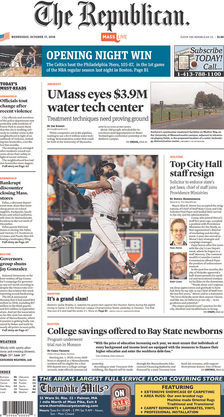
The Republican is a newspaper based in Springfield, Massachusetts, covering news in the Greater Springfield area, as well as national news and pieces from Boston, Worcester and northern Connecticut. It is owned by Newhouse Newspapers, a division of Advance Publications. During the 19th century the paper, once the largest circulating daily in New England, played a key role in the United States Republican Party's founding. The newspaper became the first U.S. periodical to publish an African-American poet in 1854.

The News-Press & Gazette Company (NPG) is a media company based in St. Joseph, Missouri, wholly owned and operated by the Bradley family. It is presided by Brian Bradley and David R. Bradley, with Hank Bradley (retired), Eric Bradley, and Kit Bradley serving on its board of directors. All are descendants of family patriarch Henry D. Bradley and his son, David Bradley, Sr.

Old Angel Midnight is a long narrative poem by American novelist and poet Jack Kerouac. It was culled from five notebooks spanning from 1956 to 1959, while Kerouac was fully absorbed by his studies of Buddhism and Buddhist philosophy. Kerouac initially experimented with Old Angel Midnight in 1953 in his diary titled "1953. Notes again." In entries dated from November 20 to December 3, 1953, he made notes on "Lucien Midnight" which was to be originally conceptualized in what he called "book movie" form, when he closed his eyes and projected onto paper a cinematic sense of what he heard. A bookmovie, he explained in Some of the Dharma, is a "prose concentration camera-eye visions of a definite movie of the mind with fade-ins, pans, close-ups, and fade-outs." Kerouac's notes on Lucien Midnight were written while staying in the Lower East Side where he initially heard sounds coming through a tenement window from the wash court below. He then heard voices coming from kitchens of the other occupants in nearby apartment buildings and a man named Paddy arriving home drunk, and even a junky stirring in his bed. Kerouac conceptualized an idea of developing a work based on James Joyce’s experimental novel Finnegans Wake where the “sounds of the universe” became the chief “plot” with all of its associated “neologisms, mental associations, puns and wordmixes” that stewed a plethora of languages and “nonlanguages.” Kerouac determinedly “scribbled out in a strictly intuitional discipline at breakneck speed” the fledgling prose that would finally comprise the finished book for City Lights's Pocket Poet series eight years later. Kerouac's one dogma was to compose Lucien Midnight strictly in pencil by candlelight. Lucien Midnight differs from his sketching method of writing because it is based upon an aural experience, and not visual. The bookmovie approach was abandoned in 1953 in favor of a different approach he had stylistically achieved by 1956.

Ralph Fletcher is an American writer of children's picture books, young adult fiction, and poetry. He is also an educational consultant, and author of books for both children and professional educators on the art of writing.
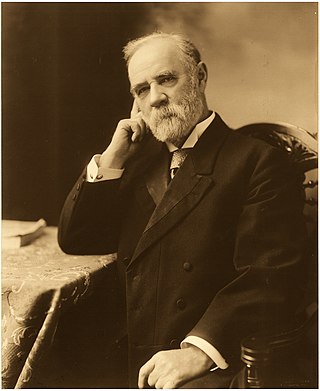
John Forrest was a Canadian Presbyterian minister and educator in Nova Scotia. He served as President of Dalhousie University from 1885 to 1910, during which time he oversaw the university's expansion with new departments and the Studley Campus.
The St. Joseph Gazette was a newspaper in St. Joseph, Missouri from October 1845 until June 30, 1988, when its morning position was taken over by its sister paper, the St. Joseph News-Press.
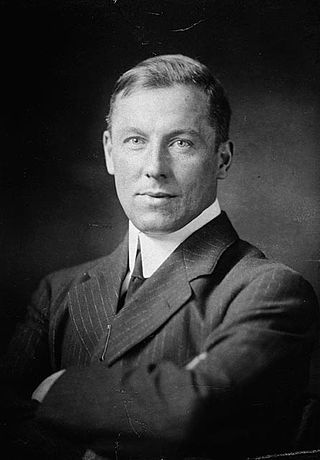
Robert William Service was a Scottish-Canadian poet and writer, often called "the Bard of the Yukon". Born in Lancashire of Scottish descent, he was a bank clerk by trade, but spent long periods travelling in the west in the United States and Canada, often in poverty. When his bank sent him to the Yukon, he was inspired by tales of the Klondike Gold Rush, and wrote two poems, "The Shooting of Dan McGrew" and "The Cremation of Sam McGee", which showed remarkable authenticity from an author with no experience of the gold rush or mining, and enjoyed immediate popularity. Encouraged by this, he quickly wrote more poems on the same theme, which were published as Songs of a Sourdough, and achieved a massive sale. When his next collection, Ballads of a Cheechako, proved equally successful, Service could afford to travel widely and live a leisurely life, basing himself in Paris and the French Riviera.
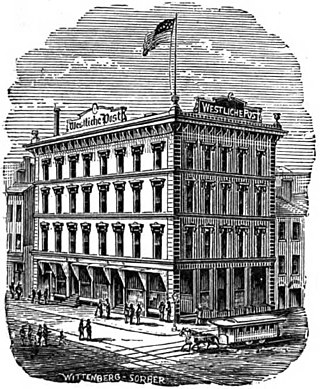
Westliche Post was a German-language daily newspaper published in St. Louis, Missouri. The Westliche Post was Republican in politics. Carl Schurz was a part owner for a time, and served as a U.S. Senator from Missouri for a portion of that time.
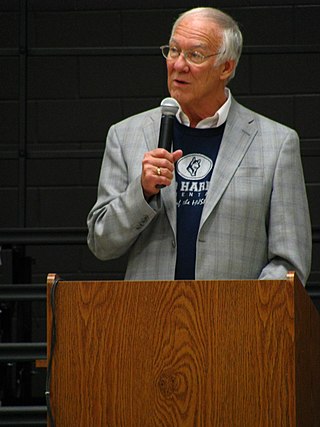
David Lee Harrison is an American children's author and poet.

The Albrecht-Kemper Museum of Art is an art museum located in St. Joseph, Missouri. The museum is in the former home of Mr. and Mrs. William Albrecht at 2818 Frederick Avenue. The Albrecht-Kemper Museum of Art has an extensive collection of 18th-, 19th- and 20th-century American art. Through special exhibitions, educational programs, performance events and publications, the Albrecht-Kemper serves as a cultural arts center for Northwest Missouri.

James Duard Marshall was a painter, lithographer, museum director, and art conservator who lived most of his life in Kansas City. Duard [pronounced "doo-erd"] was a student of Thomas Hart Benton and is best known for his 30-foot mural created for the centennial of Neosho, Missouri in 1939. The civic leaders of Neosho had approached Benton to produce the mural, as Benton had been born in Neosho, but he suggested that his student Marshall do the job. That mural hangs in the Neosho Newton County Library.
















